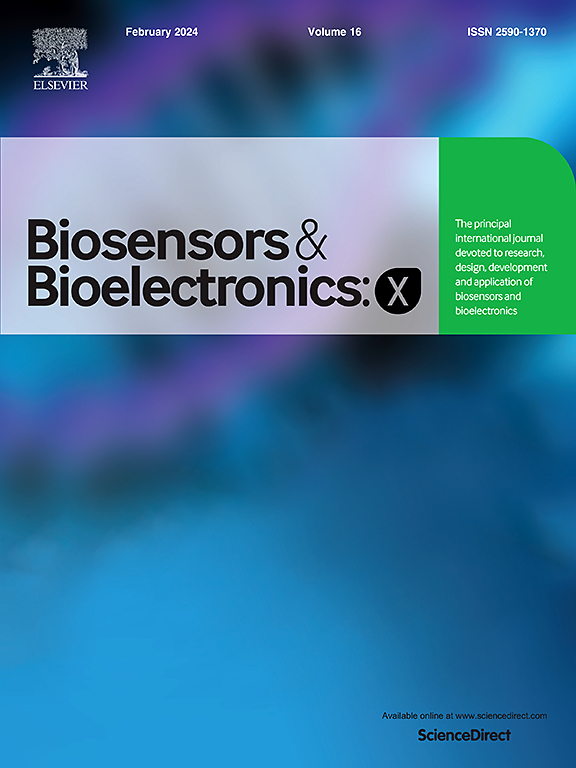Design of a polarization independent terahertz metamaterial absorber for biomedical sensing applications
IF 10.61
Q3 Biochemistry, Genetics and Molecular Biology
引用次数: 0
Abstract
Metamaterial absorbers (MMAs) are currently highly desirable because of their special absorption qualities. In this paper, a highly simplified and optimized terahertz MMA is proposed and analyzed for sensing applications. The proposed MMA is polarization-independent because of its symmetrical structure. Its symmetrical structure is achieved through the utilization of L-shaped gold patches. Being polarization-independent means that terahertz waves of any polarization can be efficiently absorbed by it. The proposed design consists of several L-shaped gold metallic patches over a polyimide substrate and a ground plane. It achieves an absorption of 96% at a specific frequency of 1.672 THz with a quality factor of 28.26. The quality factor indicates a sharp resonance peak, which is crucial for accurate sensing measurements. The absorber's resonance frequency changes with its surrounding medium's refractive index (RI). Thus, the MMA can also be used as a RI sensor. The RI has varied in the range of 1.304–1.342. The average sensitivity of the proposed sensor is 374 GHz/RIU. It is important to note that most biomedical samples have RI ranges from 1.3 to 1.39, making the proposed sensor highly suitable for a broad range of biomedical applications. The biomedical applications include non-invasive detection of subtle changes within tissues, monitoring drug delivery processes or even early-stage disease diagnosis.
用于生物医学传感应用的偏振无关太赫兹超材料吸收体的设计
超材料吸收材料由于其特殊的吸收特性而受到广泛的关注。本文提出了一种高度简化和优化的太赫兹MMA,并对其进行了分析。由于其对称结构,所提出的MMA是极化无关的。它的对称结构是通过利用l形的金块来实现的。偏振无关意味着任何偏振的太赫兹波都能被它有效地吸收。提出的设计包括在聚酰亚胺基片和接地面上的几个l形金金属贴片。在1.672 THz的特定频率下,吸光度达到96%,质量因子为28.26。质量因子表示一个尖锐的共振峰,这对精确的传感测量至关重要。吸波器的共振频率随周围介质折射率的变化而变化。因此,MMA也可以用作RI传感器。国际汇价在1.304-1.342的范围内变动。该传感器的平均灵敏度为374ghz /RIU。值得注意的是,大多数生物医学样品的RI范围为1.3至1.39,这使得所提出的传感器非常适合广泛的生物医学应用。生物医学应用包括对组织内细微变化的非侵入性检测,监测药物输送过程,甚至早期疾病诊断。
本文章由计算机程序翻译,如有差异,请以英文原文为准。
求助全文
约1分钟内获得全文
求助全文
来源期刊

Biosensors and Bioelectronics: X
Biochemistry, Genetics and Molecular Biology-Biophysics
CiteScore
4.60
自引率
0.00%
发文量
166
审稿时长
54 days
期刊介绍:
Biosensors and Bioelectronics: X, an open-access companion journal of Biosensors and Bioelectronics, boasts a 2020 Impact Factor of 10.61 (Journal Citation Reports, Clarivate Analytics 2021). Offering authors the opportunity to share their innovative work freely and globally, Biosensors and Bioelectronics: X aims to be a timely and permanent source of information. The journal publishes original research papers, review articles, communications, editorial highlights, perspectives, opinions, and commentaries at the intersection of technological advancements and high-impact applications. Manuscripts submitted to Biosensors and Bioelectronics: X are assessed based on originality and innovation in technology development or applications, aligning with the journal's goal to cater to a broad audience interested in this dynamic field.
 求助内容:
求助内容: 应助结果提醒方式:
应助结果提醒方式:


